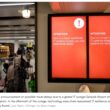FirstNet buildout 80% complete, serves 1.2 million subscribers, AT&T exec says
AT&T’s contracted FirstNet deployment of LTE equipment operating on 700 MHz Band 14 spectrum is 80% complete—a year ahead of schedule—and the overall public-safety broadband system serves 1.2 million subscribers and more than 10,000 public-safety entities, an AT&T executive said this week.
AT&T Chief Financial Officer (CFO) John Stephens made the statements during the Deutsche Bank Media, Internet & Telecom Conference, where he noted that AT&T meeting its FirstNet commitments is helping improve the carrier’s overall network quality and subscriber growth.
“We’ve got 1.2 million FirstNet customers today, and that’s growing,” Stephens said during the conference session, which was webcast. “We’ve got over 10,000 entities—police departments, fire departments, municipalities, counties, state governments—that have now qualified us, … so, we’ve got a lot to sell into.
“It’s not only the first responders as I think about them—those wonderful people who are out there in police and fire and emergency medical technicians—but it’s also the folks that go into these tornado- or thunderstorm-ravaged areas and climb the power lines and put the power lines back in service and put the telephone lines back in service and put the gas lines back in service and work in the hospitals. They’re also now qualified for first-responder-type services.”
Stephens said that these potential FirstNet users that are outside of the core public-safety user groups—referenced by the FirstNet Authority as “extended primary users”—likely include 10 million people or more, which represents a healthy opportunity for AT&T to expand its customer base. In addition, there is potential to add extra subscriptions—multiple devices or family members—to a FirstNet user that can help fuel subscriber growth.
Under its contract with the FirstNet Authority, AT&T is required to build out the nationwide public-safety broadband network (NPSBN) utilizing 700 MHz Band 14 spectrum—airwaves licensed to the FirstNet Authority—within 5 years of the initial buildout task order being issued in March 2018. If AT&T completes all deployment milestones during the contract period, the carrier is scheduled to receive a total of $6.5 billion from the FirstNet Authority.
Reaching 80% completion at this time it means the FirstNet deployment is more than one year ahead of the schedule envisioned in the contract. The 80% buildout threshold also is significant for AT&T, because it is one of the milestones that must be reached for the carrier to qualify for a payment from the FirstNet Authority. AT&T also must meet subscriber targets and technology-development goals—for instance, offering 3GPP-compliant mission-critical-push-to-talk (MCPTT) service—to qualify for a full payment for a given deployment phase.
Stephens reiterated AT&T’s strategy surrounding the FirstNet buildout, noting that crews installing gear to support operations on the 20 MHz of Band 14 spectrum also deployed equipment allowing AT&T to utilize about 40 MHz of airwaves in the WCS and AWS-3 bands. In total, AT&T has 160 MHz of licensed spectrum below the 6 GHz band, Stephens said.
“This is giving us great coverage. This is giving us great speeds, giving us great quality,” he said. “We’ve been winning awards from GWS and from Ookla and others that support that.”
While installing equipment that enables all of this spectrum to be used, crews working on AT&T cell sites also have deployed gear that prepares each location to support 5G service by implementing a software upgrade. As a result, AT&T plans to have nationwide 5G coverage—covering more than 200 million in population—by the middle of this year, according to Stephens.
“We’re seeing increased speeds and quality [from 5G at sub-6 GHz], but not the peak speeds that we’ll see in the future as we roll out some of the new technologies and specifically as our consumer base switches to 5G phones,” Stephens said. “Going forward, what we’ll see is an improvement in the latency and speeds as the technologies that go into the network continue to improve, whether that’s dynamic spectrum sharing or any other technologies that we’ll roll out.
“But quite frankly, we’ve had such a big jump in our network coverage—because of FirstNet—that our LTE speeds have jumped up significantly, so our customers are already experiencing some of that positive impact from the build. We believe that’s why you’ve seen our service revenue grow the last 3 quarters.”

















